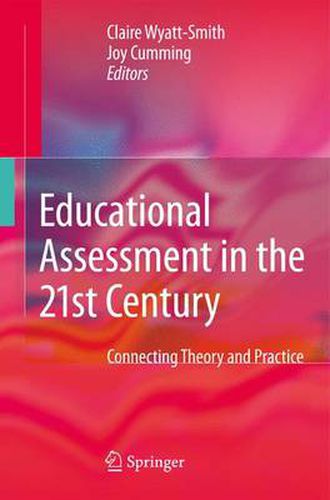Readings Newsletter
Become a Readings Member to make your shopping experience even easier.
Sign in or sign up for free!
You’re not far away from qualifying for FREE standard shipping within Australia
You’ve qualified for FREE standard shipping within Australia
The cart is loading…






This title is printed to order. This book may have been self-published. If so, we cannot guarantee the quality of the content. In the main most books will have gone through the editing process however some may not. We therefore suggest that you be aware of this before ordering this book. If in doubt check either the author or publisher’s details as we are unable to accept any returns unless they are faulty. Please contact us if you have any questions.
Signs of Change: Assessment Past, Present and Future Another Time, Another Place…Examinations Then and Now In the Temple of Literature in Hanoi, Vietnam, a series of stone stelae records the names of the handful of illustrious examination candidates who, in each century, passed the national examination to become a Doctor of Literature. Beginning in the 11thcentury,theexamswereconductedpersonallybysuccessivekingswhopursued Confucian ideals that found expression in the enormous value placed on the pursuit of wisdom and learning. In the 21st century we are both puzzled and impressed by this tradition. Puzzled by such an explicit commitment to a meritocracy in an essentially feudal society; impressed by this enthusiasm for learning and the pursuit of wisdom at the highest level of society. Yet, there are also important similarities between the 11th and 21st centuries. Then, as now, assessment was associated with excellence, high standards, pr- tige and competition-success for the chosen few; disappointment for the majority. Then, as now, the pursuit of excellence was embedded in a social context that favoured the elite and determined success in terms of the predilections of the p- erful. Then, as now, the purpose of the assessment, the way it was conducted and its impact on society all re ected the social and economic priorities of the day.
$9.00 standard shipping within Australia
FREE standard shipping within Australia for orders over $100.00
Express & International shipping calculated at checkout
This title is printed to order. This book may have been self-published. If so, we cannot guarantee the quality of the content. In the main most books will have gone through the editing process however some may not. We therefore suggest that you be aware of this before ordering this book. If in doubt check either the author or publisher’s details as we are unable to accept any returns unless they are faulty. Please contact us if you have any questions.
Signs of Change: Assessment Past, Present and Future Another Time, Another Place…Examinations Then and Now In the Temple of Literature in Hanoi, Vietnam, a series of stone stelae records the names of the handful of illustrious examination candidates who, in each century, passed the national examination to become a Doctor of Literature. Beginning in the 11thcentury,theexamswereconductedpersonallybysuccessivekingswhopursued Confucian ideals that found expression in the enormous value placed on the pursuit of wisdom and learning. In the 21st century we are both puzzled and impressed by this tradition. Puzzled by such an explicit commitment to a meritocracy in an essentially feudal society; impressed by this enthusiasm for learning and the pursuit of wisdom at the highest level of society. Yet, there are also important similarities between the 11th and 21st centuries. Then, as now, assessment was associated with excellence, high standards, pr- tige and competition-success for the chosen few; disappointment for the majority. Then, as now, the pursuit of excellence was embedded in a social context that favoured the elite and determined success in terms of the predilections of the p- erful. Then, as now, the purpose of the assessment, the way it was conducted and its impact on society all re ected the social and economic priorities of the day.